-
17.09.2015
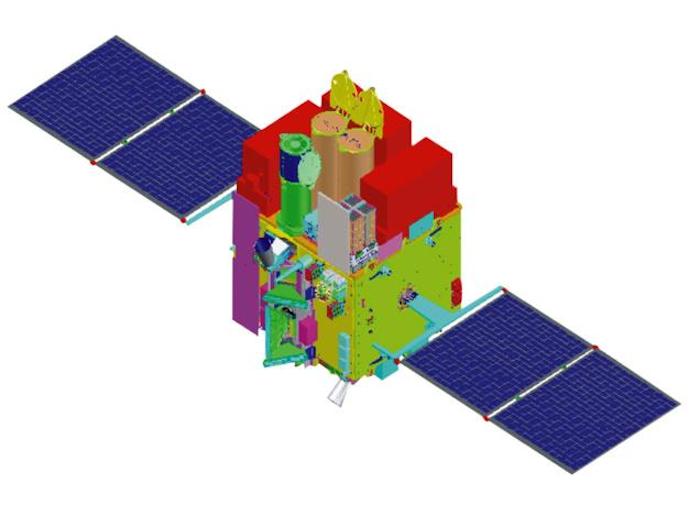
BENGALURU (PTI): ASTROSAT, the satellite for the first dedicated Indian astronomy mission aimed at studying celestial objects, is scheduled for launch on September 28, a senior Indian Space Research Organisation official said on Wednesday.
"The satellite is scheduled for launch on board the launch vehicle PSLV C-30, on September 28 morning 10 am," Director, Public Relations, ISRO, Deviprasad Karnik told PTI.
He said "now the vehicle assembly is almost completed; along with ASTROSAT there will be six co-passengers -- one satellite each from Indonesia and Canada, and four nano satellites from the US. These satellites have already arrived and those preparations are going on."
The six foreign satellites are meant for maritime surveillance.
ISRO Satellite Centre (ISAC) had transported ASTROSAT to the Satish Dhawan Space Centre at Sriharikota, using a specially-designed Satellite Transportation System (STS) on August 16.
The mission is capable of performing observations in ultra-violet (UV), optical, low and high-energy X-ray wavebands at the same time, ISRO had earlier said.
It had said ASTROSAT is the first mission to be operated as a space observatory by ISRO.
ASTROSAT carries four X-ray payloads, one UV telescope and a charge particle monitor.
Apart from ISRO, four other Indian institutions -- Tata Institute of Fundamental Research, Indian Institute of Astrophysics, Inter-University Centre for Astronomy and Astrophysics and Raman Research Institute -- are involved in payload development.
Two of the payloads are in collaboration with Canadian Space Agency and University of Leiscester, UK, ISRO had said.
Quelle: PTI
-
Update: 20.09.2015
.
Astrosat, Indiens Hubble, wird am 28. September gestartet
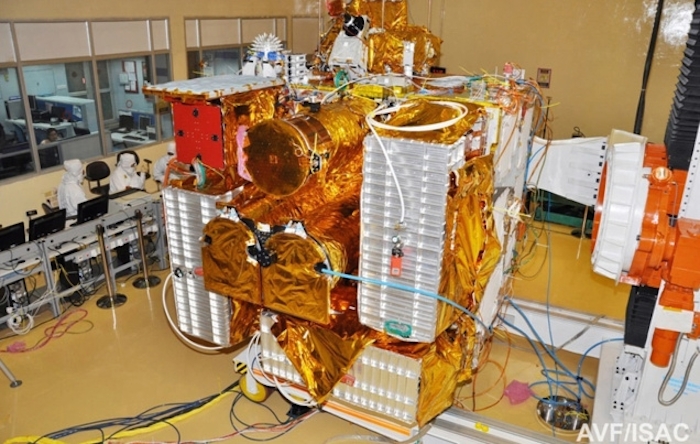
Astrosat, India's Hubble, to be launched on September 28
India's observatory will be the fourth in space, after the Hubble, Russia's Spektr R and Suzaku of Japan
Astrosat, India’s first space observatory, is set to be launched on September 28. Dedicated to astronomy, the satellite is a miniature version of the Hubble, the US-European joint space observatory that has discovered new galaxies and improved understanding of the universe.
India’s observatory will be the fourth in space, after the Hubble, Russia’s Spektr R and Suzaku of Japan.
Astrosat, initially planned for 2005, has been delayed by a decade, as the scientific community struggled to build with precision the instruments needed for such operations.
The instruments, spreading across ultraviolet and X-ray wavelengths, will study black holes, neutron stars, quasars, white dwarfs and pulsars.
“Astrosat is special due to the choice of instruments to study in multi-wave lengths — UV rays, visible and X-rays — which even the Hubble doesn’t have,” A S Kiran Kumar, chairman of the Indian Space Research Organisation (Isro), had said in a recent interview. “The instruments allow simultaneous observation of cosmic sources, an area in which other observatories currently have limitations.”
The diameter of Astrosat’s optical mirror is around 30 cm, compared with 2.4 m in the case of Hubble. It is expected the US space agency will launch the James Webb observatory, a successor to the Hubble, in 2018.
The Astrosat will carry instruments of various Indian research labs such as the Tata Institute of Fundamental Research, the Indian Institute of Astrophysics, the Inter-University Centre for Astronomy and Astrophysics and the Raman Research Institute. In addition, two payloads have sensors from the Canadian Space Agency and the University of Leicester, UK.
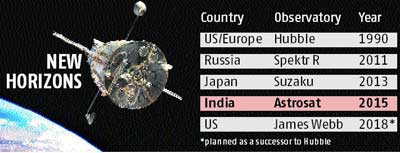
Isro’s planetary exploratory group and the Indian Institute of Science have also contributed to the spacecraft, which carries four X-ray payloads, a UV telescope and a charge particle monitor.
“One of the reasons why we work with universities and tie up with institutions for these instruments is to increase the scientific base in the country,” said Kumar. “They can do research and put out papers from the scientific data we produce from our satellites.”
The Rs 178-crore Astrosat will be hurled into space by Isro’s workhorse rocket, the Polar Satellite Launch Vehicle, from the Satish Dhawan Space Centre in Sriharikota, off the eastern coast. Six small satellites — four from the US and one each from Indonesia and Canada — will ride on the rocket, which will place these satellites in the Earth’s lower orbit.
The US satellites are the first from that country to be launched from India since the two countries signed a technology safeguards agreement in 2009.
Quelle: BS
-
Update: 24.09.2015
.
Why ASTROSAT is Not ‘India’s Hubble’
The Hubble Space Telescope needs no introduction. It’s become well known for its stunning images of nebulae and star-fields, and it wouldn’t be amiss to say the telescope has even become synonymous with images of strange beauty often from distant cosmic shores. No doubt saying something is like the Hubble Space Telescope simplifies the task of communicating that object’s potential and significance, especially in astronomy, and also places the object in stellar company and effortlessly elevates its public perception.
It’s for the latter reason that the comparison shouldn’t be made lightly. Not all telescopes are or can be like the Hubble Space Telescope, which sports some of the more cutting-edge engineering at play in modern telescopy, undoubtedly necessary to produce some of the images it produces (here’s a list of stunners). The telescope also highlighted the role of aestheticism in science: humans may be how the universe realises itself but the scope of that realisation has been expanded by the Hubble Space Telescope. At the same time, it has become so famous for its discoveries that we often pay no heed to the sophisticated physics at play in its photographic capabilities, in return for images so improbable that the photography has become irrelevant to our realisation of their truth.
ASTROSAT, on the other hand, is an orbiting telescope whose launch on September 28 will place India in the small cohort of countries that have a space-borne observatory. That’s insufficient to claim ASTROSAT will be akin to the Hubble as much as it will be India’s debut on the road toward developing “Hubble-class” telescopes. ASTROSAT’s primary science objectives are:
Understand high-energy processes in binary systems
Search for black hole sources in the galaxy
Measure magnetic fields of neutron stars
Study high-energy processes in extra-galactic systems
Detect new transient X-ray sources
Perform limited high angular-resolution deep field survey in UV
The repeated mentions of high-energy are synonymous with the parts of the electromagnetic spectrum ASTROSAT will study – X-ray and ultraviolet emissions have higher frequencies and thus higher energies. In fact, its LAXPC (Large Area X-ray Proportional Counter) instrument will be superior to the NASA NuSTAR X-ray telescope: both will be logging X-ray emissions corresponding to the 6-79 keV* energy range but LAXPC’s collecting area will be almost 10x the collecting area of NuSTAR’s. Similarly, ASTROSAT’s UV instrument, the Ultraviolet Imaging Telescope, studies wavelengths of radiation from 130 nm to 320 nm, like the Cosmic Origins Spectrograph on board the Hubble spans 115-320 nm. COS has a better angular and spectral resolution but UVIT, as well as the Scanning Sky Monitor that looks for transient X-ray sources, tops with a higher field of view. The UVIT and LAXPC double up as visible-wavelength detectors as well.
In contrast, the Hubble makes observations in the infrared, visible and UV parts of the spectrum. Its defining feature is a 2.4-m wide hyperbolic mirror that serves to ‘collect’ photons from a wide field of view onto a secondary hyperbolic mirror, which in turn focuses into the various instruments (the Ritchey-Chrétien design). ASTROSAT also has a primary collecting mirror; it is 30 cm wide.
.
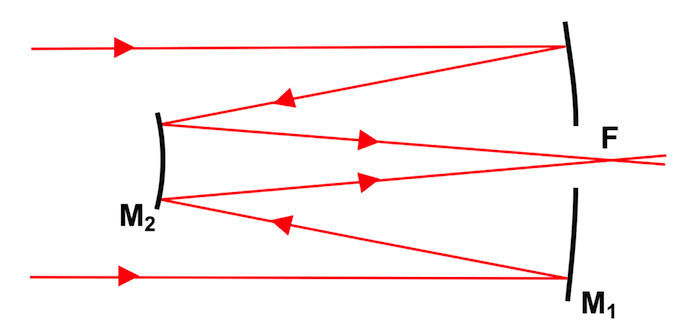
On the road to Hubbleness
But it’s quite wrong to think ASTROSAT could be like Hubble when you consider two kinds of gaps between the instruments. The first is the technical-maturity gap. Calling ASTROSAT “India’s Hubble” will imply that ISRO has reached that level of engineering capability when it has not. And making that reference repeatedly (here, here, here and here) will only foster complacency about defining the scale and scope of future missions. One of ISRO’s principal limitations is payload mass: the PSLV rocket has been the more reliable launch vehicle at our disposal and it can lift 3,250 kg to the low-Earth orbit. The GSLV rocket can lift 5,000 kg to the low-Earth orbit (10,000 kg if an upper cryogenic stage is used) but is less reliable, although promising. So, the ASTROSAT weighs 1,500 kg while the Hubble weighs 11,110 kg – the heaviest scientific satellite launched till date.
A major consequence of having such a limitation is that the technology gets to define what satellite is launched when instead of astronomers laying out what they want to find out and technology setting out to achieve it, which could be a useful impetus for innovation. These are still early days for ISRO but it’s useful to keep in mind even this component of the Hubble’s Hubbleness. In 1974, NASA and ESA began collaborating to build the Hubble. But before it was launched in 1990, planning for the James Webb Space Telescope (JWST) – conceived from the beginning to be Hubble’s successor – began in the 1980s. In 1986, an engineer named Pierre Bely published a paper outlining how the successor will have to have a 10-m primary mirror (more than 4x the width of the Hubble’s primary mirror) and be placed in the geostationary orbit so Earth doesn’t occlude its view of space, like it does for the Hubble. But even four years later, NASA didn’t have a launch vehicle that could heft 6,500 kg (JWST’s weight) to the geostationary transfer orbit. In 2018, Europe’s Ariane 5 (ECA) will be doing the honours.
The other is the public-outreach gap. As historian Patrick McCray has repeatedly noted, telescopes are astronomers’ central research tools and the quality of astronomy research is a reflection of how good the telescopes are. This doesn’t just mean large reflecting mirrors, powerful lenses and – as it happens – heavy-lift launch vehicles but also the publication of raw data in an accessible and searchable format, regular public engagement and, most importantly, effective communication of discoveries and their significance. There was a hint of ISRO pulling off good public outreach before the Mars Orbiter Mission launched in November 2013 but that evaporated soon after. Such communication is important to secure public support, political consensus and priority funding for future missions that can expand an existing telescope’s work. For the perfect example of what a lack of public support can do, look no further than the India-based Neutrino Observatory. NASA, on the other hand, has been celebrated for its social media efforts.
And for it, NASA’s missions are more readily recognisable than ISRO’s missions, at least among people who’ve not been following ISRO’s launches closely since the 1960s. Not only that, while it was easier for NASA’s scientists to keep the JWST project from being cancelled, due to multiple cost overruns, thanks to how much its ‘predecessor’ the Hubble had redefined the images of modern astronomy since the late 1990s, the Hubble’s infamous spherical aberration fault in its first years actually delayed the approval of the JWST. McCray writes in a 2009 essay titled ‘Early Development of the Next Generation Space Telescope‘ (the name of JWST before it was changed in 2002),
Years before the Hubble Space Telescope was launched in 1990 a number of astronomers and engineers in the US and Europe were thinking hard about a possible successor to the HST as well as working to engage a broad community of researchers in the design of such a new observatory. That the launch of any such successor was likely to be many years away was also widely accepted. However, the fiasco of Hubble’s spherical aberration had a serious effect on the pace at which plans were advancing for the Next Generation Space Telescope. Thus crucially for the dynamics of building the “Next Big Machine,” the fate of the offspring was intimately tied to that of the parent. In fact, … it was only when in the mid-1990s that the NGST planning was remade by the incorporation of a series of technology developments in infrared astronomy that NASA threw its institutional weight and money behind the development of a Next Generation Space Telescope.
Autonomous shouldn’t mean opaque
But even for all the aestheticism at play, ISRO can’t be said to have launched instruments capable of transcending their technical specifications, either: most of them have been weather- and resource-monitoring probes and not crafted for the purpose of uncovering elegance as much as keeping an eye out. But that doesn’t mean, say, the technical specifications of the ASTROSAT payload shouldn’t be readily available, that there shouldn’t be one single page on which one can find all info. on ISRO missions (segregated by type: telecom, weather-monitoring, meteorology, resource-monitoring, astronomy, commercial), that there shouldn’t be a channel through which to access the raw data from its science missions**, or that ISRO continue to languish in its misguided conflation of autonomy and opacity. It enjoys a relative abundance of the former, and does not have to fight for resources in order to actualise missions it designs based on internal priorities. On the other hand, it’s also on the cusp of making a habit of celebrating frugality***, which could in principle provide the political administration with an excuse to deny increased funding in the future, and surely make for a bad idea in such an industry that mandates thoroughness to the point of redundancy as space. So, the day ought to come when the bright minds of ISRO are forced to fight and missions are chosen based on a contentious process.
There are multiple ways to claim to be the Hubble – but ASTROSAT is definitely not “India’s Hubble”. ISRO could in fact banish this impression by advertising ASTROSAT’s raw specs instead of letting people abide by inadequate metaphors: an amazing UV imager, a top-notch X-rays detector, a first class optical observer. A comparison with the Hubble also diminishes the ASTROSAT by exposing itself to be not like the Hubble at all and, next, by excluding from conversation the dozens of other space-borne observatories that it has already bested. It is more exciting to think that with ASTROSAT, ISRO is just getting started, not finished.
Quelle: WIRE
-
25.09.2015
.
ISRO
PSLV-C30/ASTROSAT UPDATE
countdown to start at 08:00hr IST on Saturday, Sep 26, 2015 and the launch on MONDAY, Sep 28,2015 at 10:00 hr IST
Quelle: ISRO
-
Update: 26.09.2015
.
Countdown for launch of ASTROSAT satellite begins
BENGALURU, SEPT 26:
The 50-hour countdown for the September 28 launch of PSLV-C30 carrying ASTROSAT satellite for the first dedicated Indian astronomy mission aimed at studying celestial objects has begun, ISRO said.
The countdown activity of PSLV-C30/ASTROSAT Mission started at 08:00 hours today, Indian Space Research Organisation said.
PSLV-C30 carrying ASTROSAT along with six other co-passengers, one satellite each from Indonesia and Canada, and four nano satellites from the US is scheduled for launch on September 28 at 10 am from the space port of Sriharikota in Andhra Pradesh.
Mission Readiness Review (MRR) committee and Launch Authorisation Board (LAB) that met yesterday had cleared the launch of PSLV-C30.
Commenting on the launch, ISRO Chairman A.S. Kiran Kumar had recently said, “What it means for India is this: it is one of the first scientific missions which will be available to the Indian researcher community as an observation opportunity.
“This is a starting point for such things.”
ASTROSAT is India’s first dedicated multi-wavelength space observatory. This scientific satellite mission endeavours for a more detailed understanding of our universe.
One of the unique features of ASTROSAT mission is that it enables the simultaneous multi-wavelength observations of various astronomical objects with a single satellite, ISRO said.
ASTROSAT will observe the universe in optical, ultraviolet, low and high energy X-ray regions of the electromagnetic spectrum, whereas most other scientific satellites are capable of observing a narrow range of wavelength band.
ASTROSAT with a lift-off mass of about 1,513 kg will be launched into a 650 km orbit inclined at an angle of 6 deg to the equator by PSLV-C30.
According to ISRO, after injection into Orbit, the two solar panels of ASTROSAT will automatically be deployed in quick succession. The spacecraft control centre at Mission Operations Complex (MOX) of ISRO Telemetry, Tracking and Command Network (ISTRAC) at Bengaluru will manage the satellite during its mission life.
ISRO said the scientific objectives of ASTROSAT mission are to understand high energy processes in binary star systems containing neutron stars and black holes, to estimate magnetic fields of neutron stars and to study star birth regions and high energy processes in star systems lying beyond our galaxy.
The mission is also to detect new briefly bright X-ray sources in the sky and to perform a limited deep field survey of the universe in the ultraviolet region.
ASTROSAT scheduled for five years of flight carries four X-ray payloads, one UV telescope and a charge particle monitor.
Apart from ISRO, four other Indian institutions – Tata Institute of Fundamental Research, Indian Institute of Astrophysics, Inter-University Centre for Astronomy and Astrophysics and Raman Research Institute-are involved in payload development.
Two of the payloads are in collaboration with Canadian Space Agency and University of Leiscester, UK, ISRO said.
Quelle: BL
---
PSLV-C30/ASTROSAT MISSION

India’s Polar Satellite Launch Vehicle, in its thirty first flight (PSLV-C30), is scheduled to launch 1513 kg Astrosat into a 650 km orbit of 6 deg inclination to the equator. Along with Astrosat, six satellites from international customers viz., 76 kg LAPAN-A2 of Indonesia, 14 kg NLS-14 (Ev9) of Canada and four identical LEMUR satellites of USA together weighing about 28 kg – will be launched in this PSLV flight.
PSLV-C30 will be launched from First Launch Pad (FLP) of Satish Dhawan Space Centre (SDSC) SHAR, Sriharikota. PSLV-C30 is the tenth flight of PSLV in its 'XL' Configuration. The earlier nine flights of PSLV-XL were PSLV-C11/Chandrayaan-1, PSLV-C17/GSAT-12, PSLV-C19/RISAT-1, PSLV-C22/IRNSS-1A, PSLV-C25/Mars Orbiter Spacecraft, PSLV-C24/IRNSS-1B and PSLV-C26/IRNSS-1C, PSLV-C27/IRNSS-1D, PSLV-C28/DMC3 missions. The total payload weight of PSLV-C30 is 1631 kg.
International customer satellites of PSLV-C30
LAPAN-A2 is a Microsatellite from National Institute of Aeronautics and Space-LAPAN, Indonesia. LAPAN-A2 is meant for providing maritime surveillance using Automatic Identification System (AIS), supporting Indonesian radio amateur communities for disaster mitigation and carrying out Earth surveillance using video and digital camera.
NLS-14 (Ev9), a Nanosatellite from Space Flight Laboratory, University of Toronto Institute for Advanced Studies (SFL, UTIAS), Canada. It is a maritime monitoring Nanosatellite using the next generation Automatic Identification System (AIS).
Four LEMUR nano satellites from Spire Global, Inc. (San Francisco, CA), USA, are non-visual remote sensing satellites, focusing primarily on global maritime intelligence through vessel tracking via the Automatic Identification System (AIS), and high fidelity weather forecasting using GPS Radio Occultation technology.
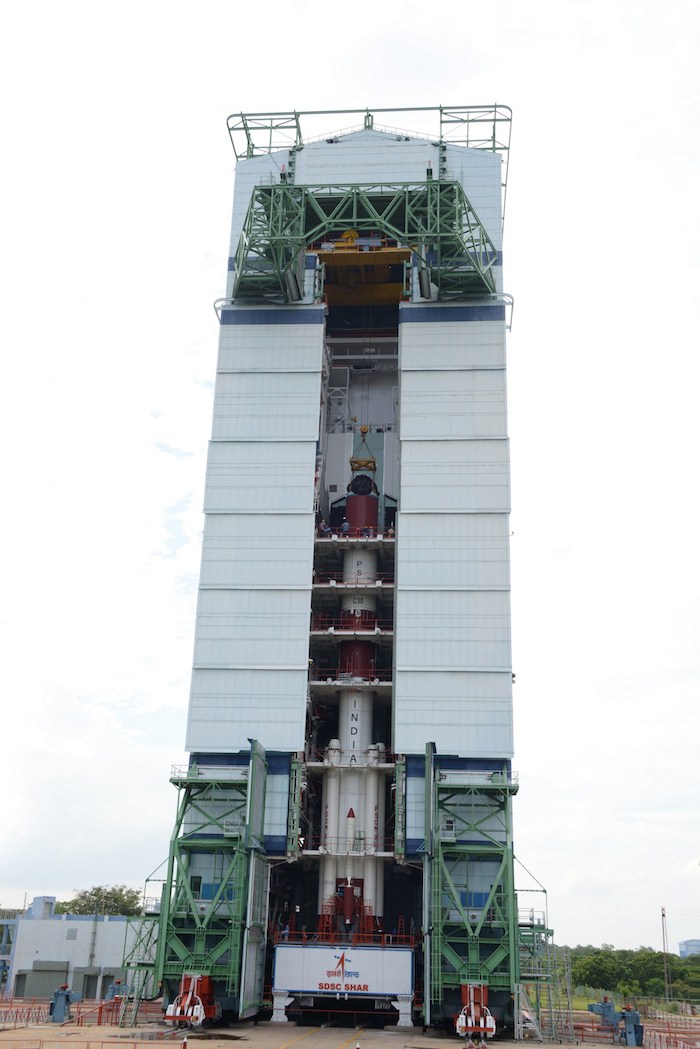
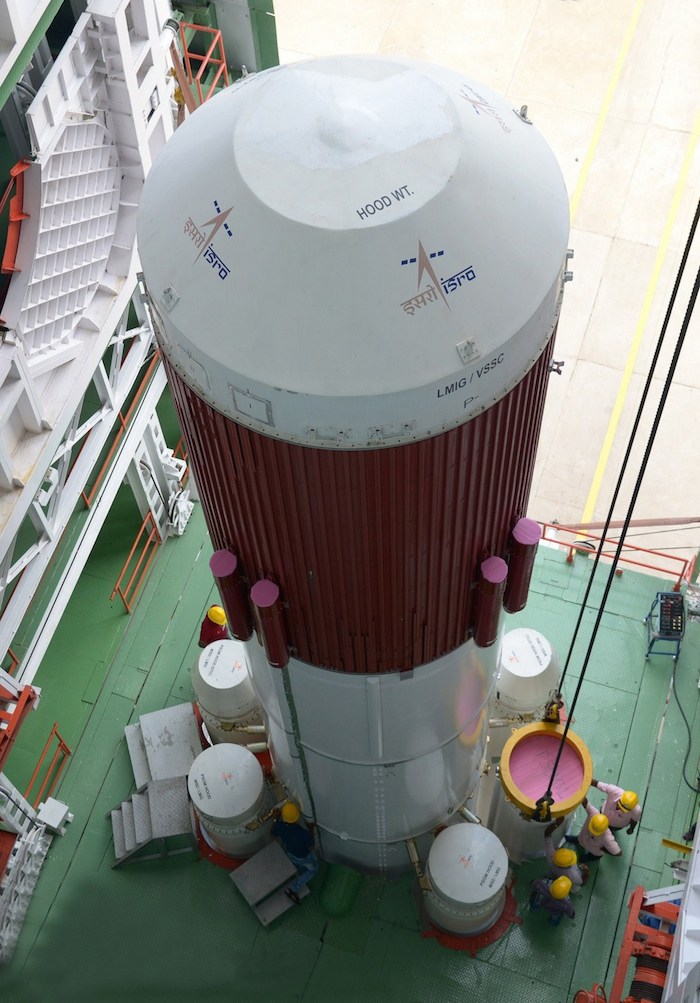
Quelle: ISRO
-
Update: 27.09.2015
.
Astrosat launch: Isro completes oxidizer filling
CHENNAI: The Indian Space Research Organization has completed the crucial filling of oxidizer filling in the fourth stage of the PSLV launch vehicle, which will carry Astrosat into the orbit.
Filling of the propellent was complete by noon on Saturday and the oxidizer was filled by evening.
One of the important payloads on Astrosat, the Ultraviolet Imaging Telescope (UVIT), which will enable to satellite to fulfil one of its primary objectives has been co-developed by the Indian Institute of Astrophysics (IIA) headquartered here.
"The payload aims to provide flux calibrated images of the sky at a spatial resolution in two ultraviolet channels. In addition to the two ultraviolet channels, simultaneous imaging is also done," IIA officials said.
Among the most interesting scientific aims of Astrosat -- India's first dedicated multi-wavelength space observatory -- are observations in wavelengths extending from the hard X-rays to the visible band like correlated temporal variations in visible, UV, soft and hard X-ray bands to investigate origin and mechanism of the emission of radiations in active galactic nuclei.
And Isro has said that the payload is capable of "observing sky in the visible, near UV and far UV regions of the electromagnetic spectrum." "The two telescopes on the payload are designed to achieve an excellent image resolution," an Isro scientist said.
Quelle: THE TIMES OF INDIA
-
Countdown begins for ISRO’s Astrosat launch
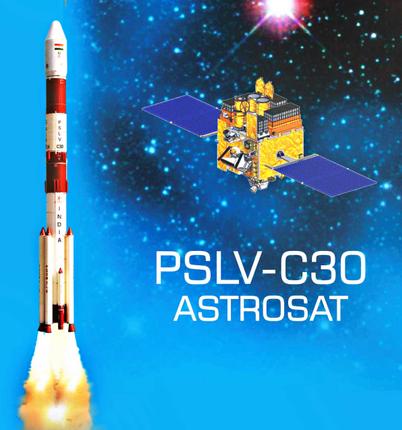
India’s first astronomy observatory to be launched tomorrow morning at Sriharikota
Astrosat, the country’s first astronomy observatory to study distant celestial objects, will be launched on Monday morning. A 50-hour countdown began at 8 a.m. on Saturday at the launch port in Sriharikota in Andhra Pradesh.
The Indian Space Research Organisation said the launch vehicle, PSLV-C30, was being readied with propellants ahead of the launch, slated for 10 a.m. at the Satish Dhawan Space Centre.
Six tiny satellites of three foreign customers, weighing 118 kg, are being put in space on the same flight. Significantly, for the first time, the PSLV launcher has a U.S. customer using it to put four small satellites in space. The other customers are from Canada and Indonesia. The vehicle has, to date, lifted 45 small and mid-sized foreign satellites for a fee.
The 1,513-kg Astrosat, estimated to have cost around Rs. 180 crore, carries five instruments and is among the few Indian scientific satellites. Most of ISRO’s spacecraft are planned for specific applications such as communication, Earth observation and more recently, navigation.
Moving in a near Equatorial orbit 650 km above Earth, Astrosat will study black holes, scan the distant universe, star birth regions beyond our galaxy, binary and neutron starts over at least five years. It will simultaneously observe the sky in multiple light bands or wavelengths of ultraviolet, optical, low and high energy X-ray. For the light-lift workhorse PSLV vehicle, this will be the 31st flight with 30 successes in its belt. The C-30 will be flown in the extended XL version.
Challenges
The instruments on the Astrosat were made in association with over half a dozen research institutions. ISRO notes that it was challenging to develop the high-resolution UV telescope and its gold coating and materials, optical elements to control contamination, the thermal control design of all instruments, and the software to allow data flow, some of which took many years.
Quelle: THE HINDU
-
Update: 28.09.2015
.
Erfolgreicher Start von ASTROSAT mit PSLV C-30 Trägerrakete
.
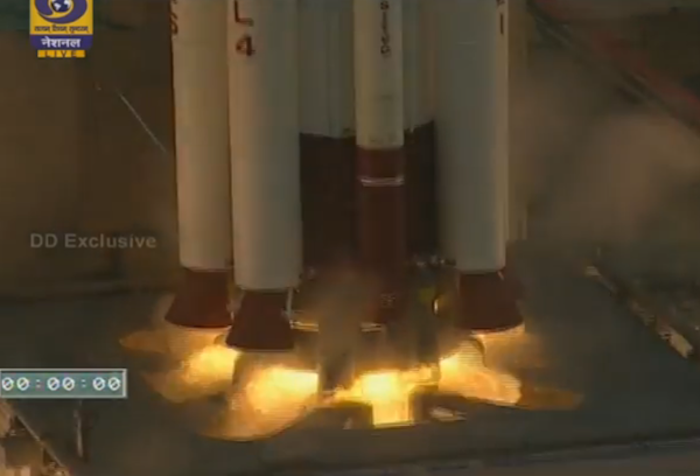
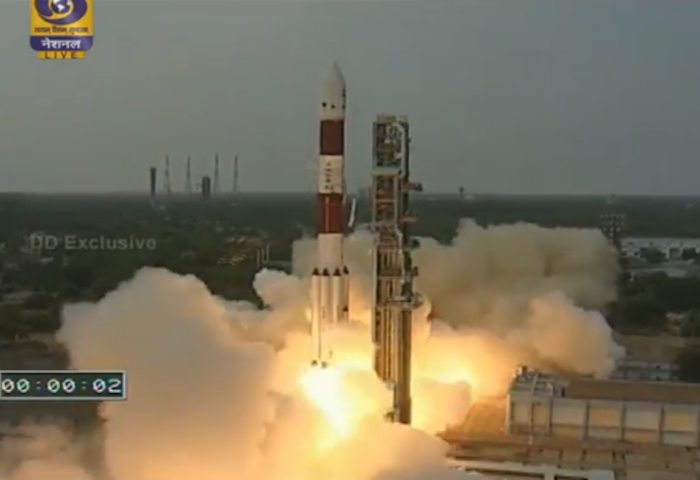
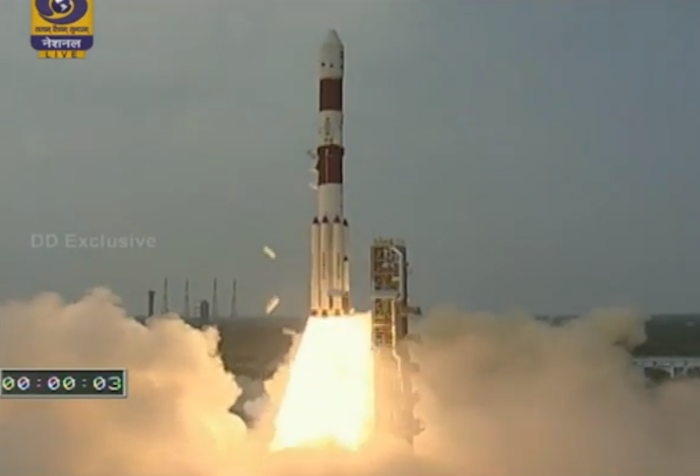
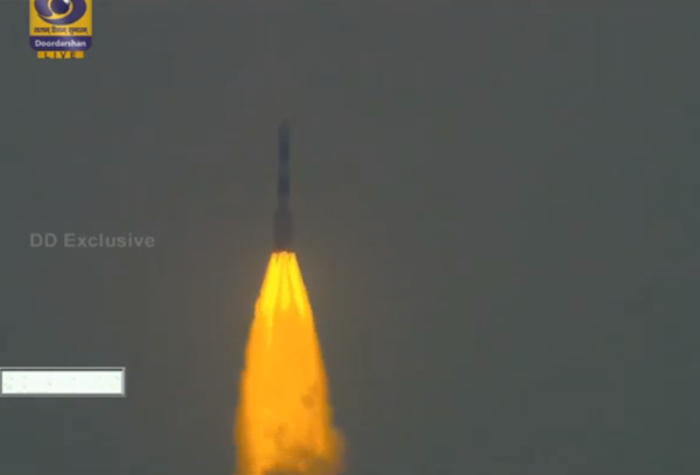
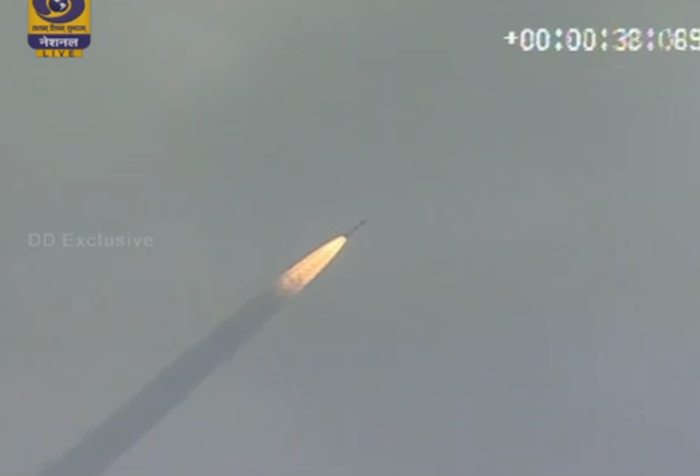
Quelle: ISRO
-
After Astrosat success, India set to launch 23 foreign satellites
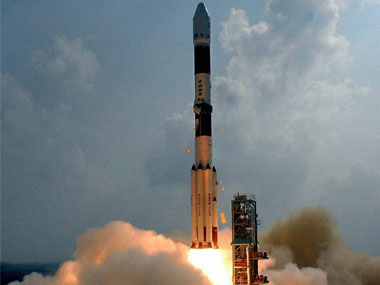
Sriharikota: India has signed up contracts to launch 23 foreign satellites soon, an official of Antrix Corporation said on Monday.
Antrix Corporation is the commercial arm of Indian space agency Indian Space Research Organisation (Isro).
"Out of 23 foreign satellites, two will go in two separate rockets. The remaining 21 satellites will piggy-back on bigger Indian satellite," the official told IANS.
He said Isro would soon be launching six Singapore satellites weighing a total of around 660 kg.
According to him, the bigger of the six is an earth observation satellite, weighing 410 kg. Two are micro-satellites, weighing 130 kg and 80 kg respectively.
The remaining three are nano-satellites, cumulatively weighing 30 kg.
According to the Antrix Corporation official, Isro will also be launching five small satellites from the US before 2016 as a piggy-back luggage.
Antrix Corporation had signed with US parties to launch nine small satellites, of which four were launched on Monday as a piggy-back luggage with Astrosat, India's first space observatory.
Till date India has launched 51 foreign satellites for a fee.
Addressing the media, Isro chairman AS Kiran Kumar said things are changing with the US. "We are having more and more interaction with the US," Kumar added.
Speaking about forthcoming rocket launches, he said the next polar satellite launch vehicle (PSLV) rocket launch will be fully commercial.
He said India would be launching communication satellite GSAT-15 using Ariane rocket, a European heavy-lift launch vehicle, this November and two navigation satellites from Sriharikota.
According to Kumar, all the seven navigation satellites, part of the Indian Regional Navigation Satellite System (IRNSS), would be in place in 2016.
Queried about the status of SAARC satellite announced by Prime Minister Narendra Modi, the Isro chairman said Sri Lanka has given its consent to the configuration.
"It will be a two-tonne satellite with 12 transponders. Each SARRC nation will be given one transponder configured to give the data they need. The satellite will be launched by the end of 2016," Kumar said.
On the data sent by India's one-year-old Mars Orbiter, Mangalayan, and the result of the research done on them, the Isro chief said the data would be shared with interested researchers.
According to him, the Mars Orbiter takes four pictures every two-and-half days and sends them back to Isro.
On the issue of sourcing fully assembled rocket components by Isro, Kumar said work has started and it would take around four-and-half years to achieve that.
Quelle:IANS
-
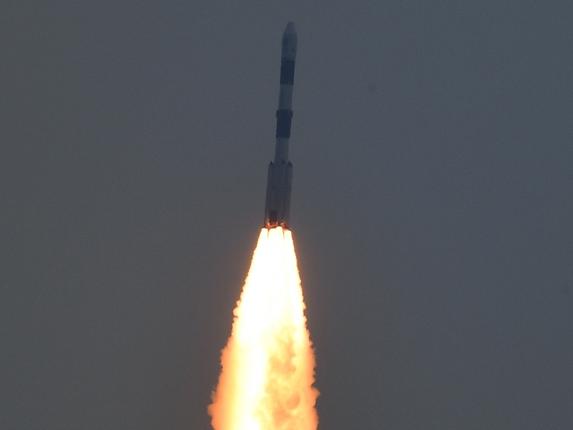
Astrosat, the country’s first astronomy observatory to study distant celestial objects and India's Polar Satellite Launch vehicle, launched from First Launch Pad of Satish Dhawan Space Centre SHAR, Sriharikota successfully. PSLV-C30 is the 10th flight of PSLV in its "XL" Configuration. The total payload weight of PSLV-C30 is 1631 kg.
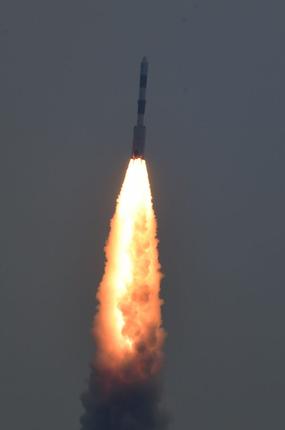
-
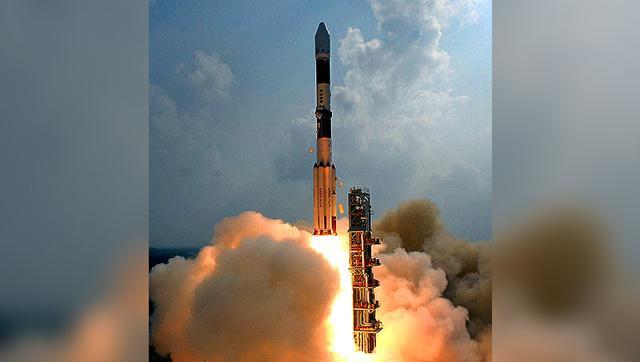
Quelle: ISRO
3939 Views
